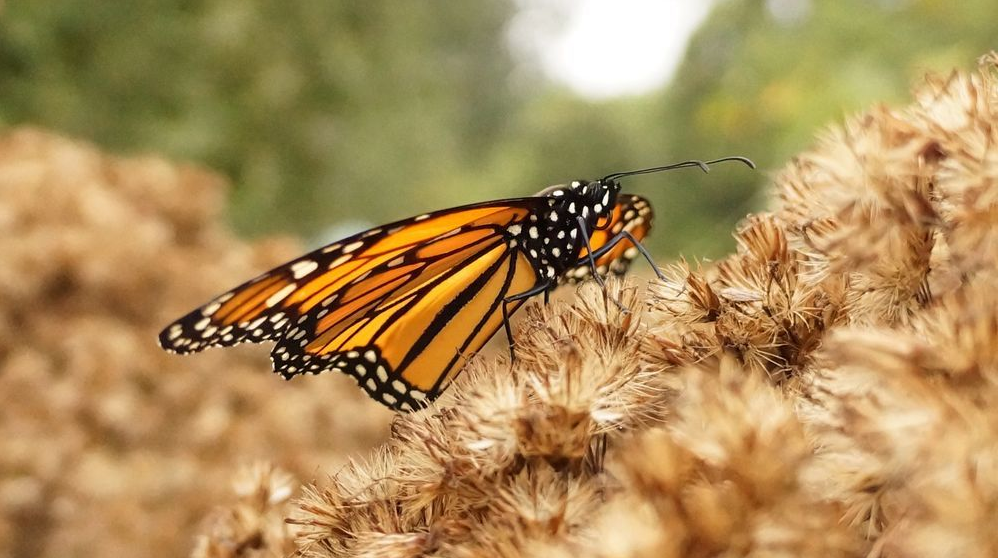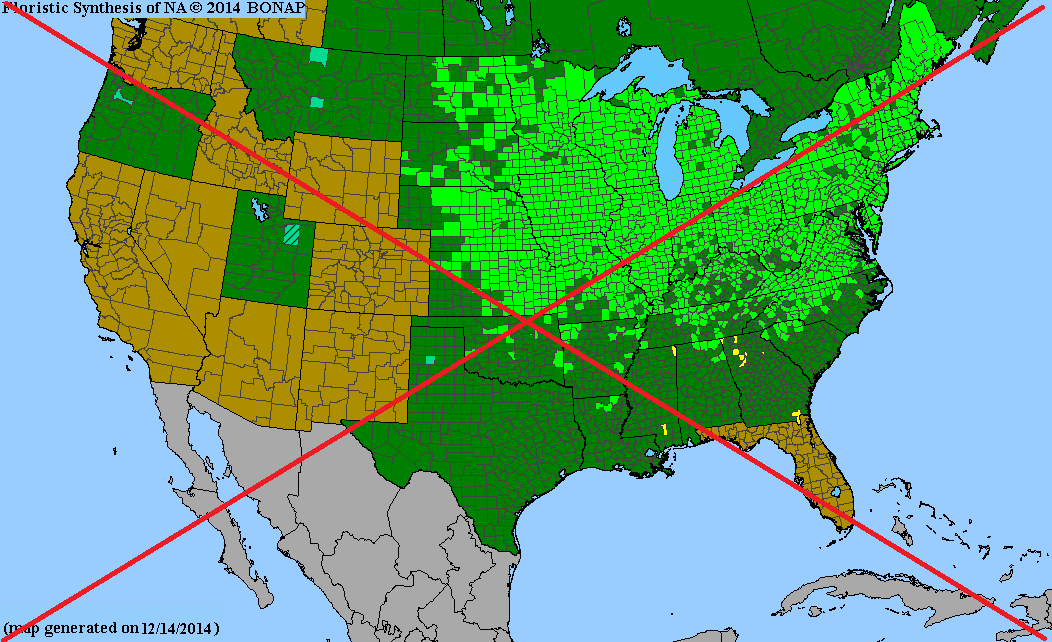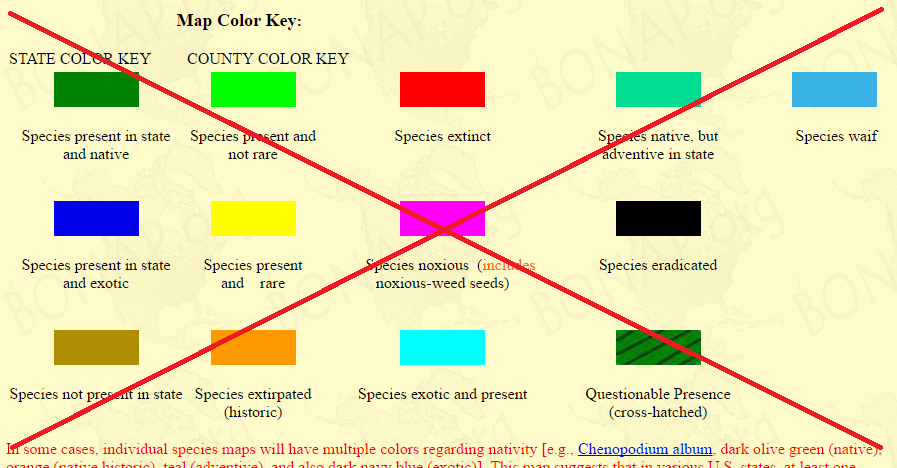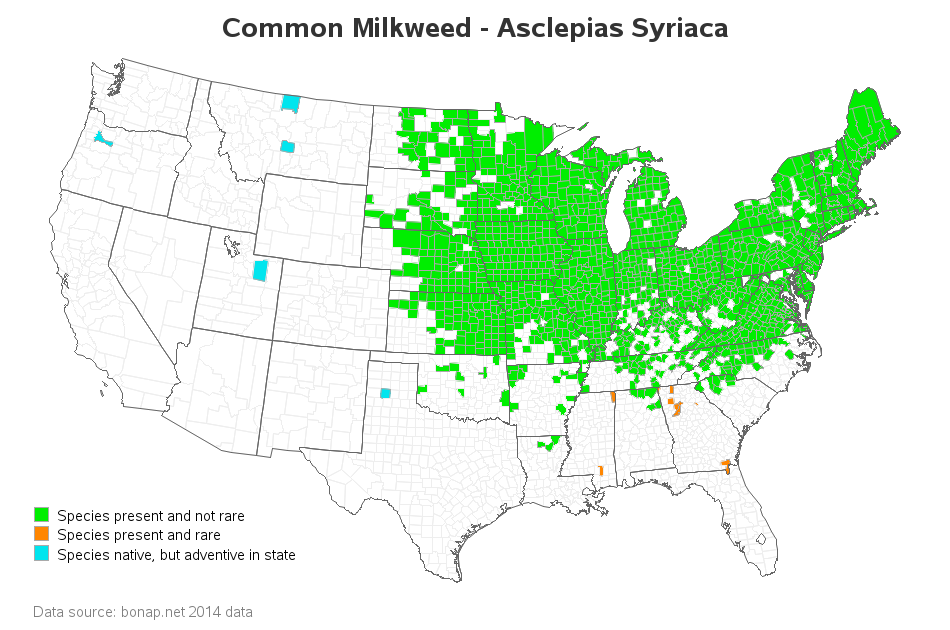Everyone who knows about monarch butterflies, likes monarch butterflies. This blog post focuses on their food source - milkweed. And to get you in the mood, here's an amazingly beautiful picture my friend Eniko made of a monarch:
In recent years, I had heard reports of the dwindling number of monarchs making the annual migration from the US to a small section of forest in Mexico. In 2013 the number of monarchs covered a record-low of 1.7 acres, but in December 2015 it was back up to 10 acres (still not the 44 acres they occupied a couple of decades ago, but certainly headed in the right direction!)
One of the causes of the declining number of monarchs is the loss of the plant that is their food source (and where they lay their eggs) - the milkweed plant. As more and more land is paved over and built on, and as large farms get really good at killing all the plants that aren't the crop they're growing, the number of milkweed plants has declined. Thankfully there have been a few programs trying to increase the number of milkweed plants (both government and private projects), and hopefully that's helping the monarchs make a comeback!
So, if you were going to plant some milkweed to help the monarchs, what kind should you plant? The xerces page recommends planting milkweed that is native to your area. And this bonap page provides US maps showing the range of each different kind of milkweed. I perused their maps and found that common milkweed (asclepias syriaca) is native to North Carolina (where I live), so that might be a good one for me to plant. I clicked the thumbnail for that map (see screen-capture below) to see the full-size map:
Their full-size map showed more detail, but I still couldn't determine whether common milkweed specifically grows in my county. The county borders aren't quite detailed enough to easily recognize each county by shape, and the geographical area where Wake County is located is somewhere along the edge of the bright green and dark green counties.
In addition to not being able to determine the exact county in their map, there were a few other problems I noticed. For example, the full size map doesn't have a title showing what kind of milkweed is being displayed. The thumbnail had a label, but the large map did not.
And then there are the colors... Their color legend is so large and complex (see below) that they even put it on a separate page from the map. There are state colors (dark green, brown, etc) and county colors, and then Mexico is gray (which is not in the legend). And some counties are even striped. I guess they're wanting to show a lot of information, but their use of colors seems a bit overloaded. In addition to their colors being overly complex, I think it's visually misleading to color a whole state, when just one county has milkweed (for example, see Texas in the map above).
So I decided to create my own simplified version of the map. In mine, I only shade the counties that have milkweed (not the whole state). And I put a nice straightforward title at the top of the page. My color legend is short/simple, and only shows the colors being used in this particular map. I also added mouse-over text so you can easily see the county names (click the image below to see the interactive version with mouse-over text). In my map, I can use the mouse-over to definitively find Wake County, and see that common milkweed is "present, and not rare".
Sometimes simpler is better - do you prefer the original map, or my simplified version? What other recommendations do you have that might make the map even better?
(Oh! - And don't forget to check out my monarch butterfly animation map in this previous blog post!)












2 Comments
I planted my milkweed! Although now I'm worried if I got the right thing. I notice there were 3 new monarchs in the yard this week.
Thanks!
If there were 3 monarchs in your yard, I take that as a sign you got it right! :)